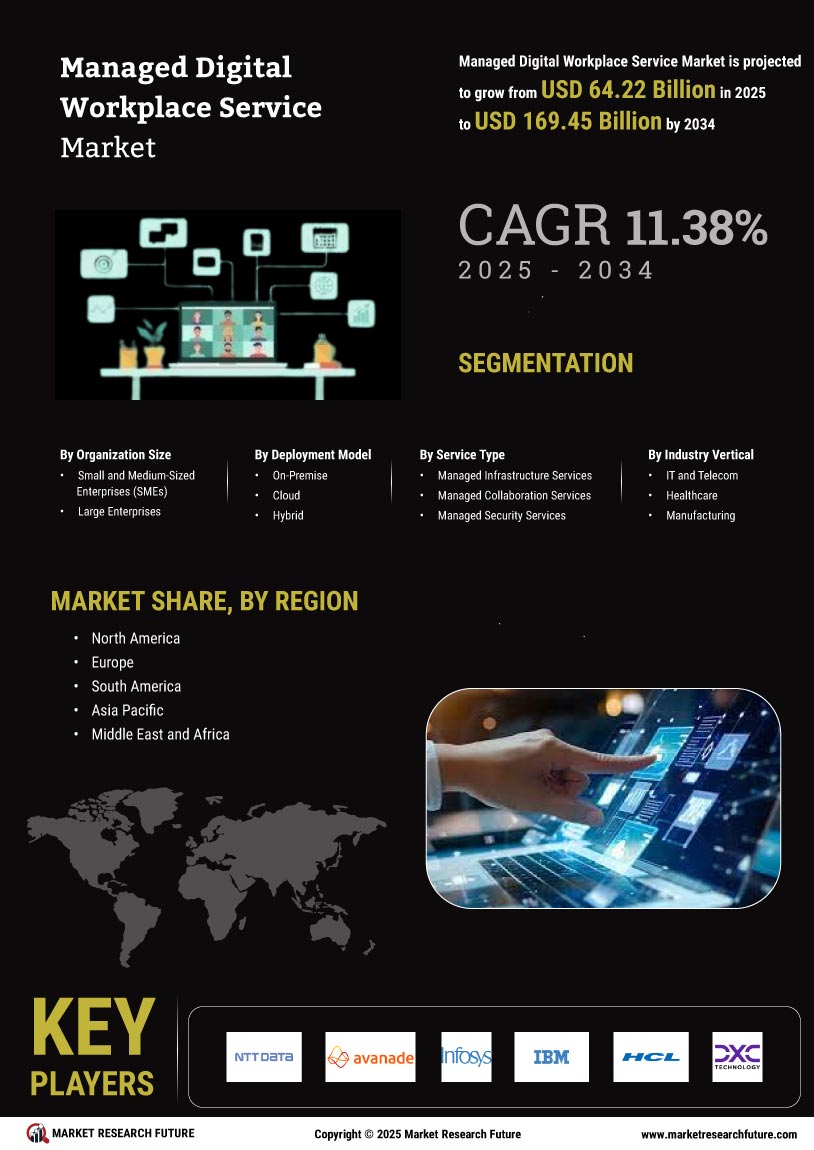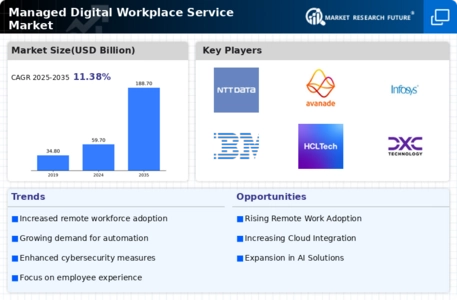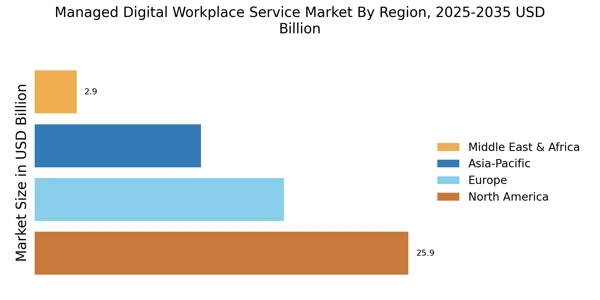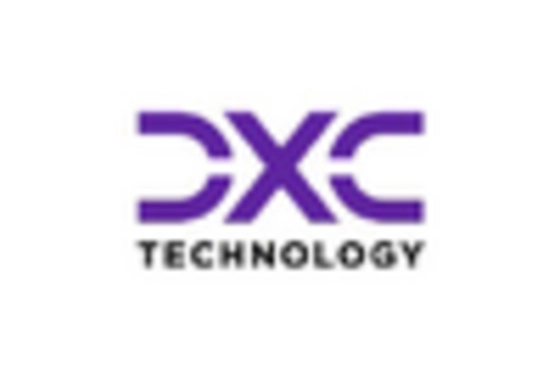Rise of Remote Work Culture
The Managed Digital Workplace Service Market is experiencing a notable surge due to the increasing acceptance of remote work. Organizations are recognizing the need for flexible work environments that support productivity regardless of location. This shift has led to a heightened demand for managed services that facilitate seamless collaboration and communication among remote teams. According to recent data, the market for remote work solutions is projected to grow significantly, with estimates suggesting a compound annual growth rate of over 20% in the coming years. As businesses adapt to this new normal, the Managed Digital Workplace Service Market is poised to benefit from the ongoing transformation of workplace dynamics.
Advancements in Cloud Computing
The Managed Digital Workplace Service Market is being propelled by advancements in cloud computing technologies. As organizations increasingly migrate their operations to the cloud, the demand for managed services that can optimize cloud environments is rising. This trend is underscored by the fact that cloud adoption rates have reached approximately 90% among enterprises, indicating a strong preference for scalable and flexible solutions. Managed digital workplace services provide the necessary infrastructure and support to ensure that cloud-based applications function efficiently, thereby enhancing overall productivity. Consequently, the Managed Digital Workplace Service Market is likely to see continued growth as businesses seek to leverage cloud capabilities.
Increased Focus on Data Security
In the Managed Digital Workplace Service Market, the emphasis on data security has become paramount. With the rise in cyber threats and data breaches, organizations are prioritizing the protection of sensitive information. Managed services that offer robust cybersecurity solutions are in high demand, as they provide the necessary tools and expertise to safeguard digital assets. Recent statistics indicate that cyberattacks have increased by over 30% in the last year, prompting businesses to invest in comprehensive security measures. This trend is likely to drive growth in the Managed Digital Workplace Service Market, as companies seek to mitigate risks associated with data vulnerabilities.
Shift Towards Employee Well-Being
The Managed Digital Workplace Service Market is increasingly influenced by a shift towards employee well-being. Organizations are recognizing that a healthy work environment is crucial for enhancing employee satisfaction and productivity. Managed services that focus on creating employee-centric solutions, such as wellness programs and flexible work arrangements, are gaining traction. Research indicates that companies investing in employee well-being see a 30% reduction in turnover rates. This growing awareness of the importance of mental and physical health in the workplace is likely to drive demand for managed digital workplace services that prioritize employee needs, thereby contributing to the overall growth of the Managed Digital Workplace Service Market.
Integration of Advanced Collaboration Tools
The Managed Digital Workplace Service Market is witnessing a significant transformation with the integration of advanced collaboration tools. As teams become more dispersed, the need for effective communication and collaboration solutions has intensified. Managed services that incorporate tools such as video conferencing, project management software, and real-time messaging platforms are becoming essential for maintaining productivity. Data suggests that organizations utilizing integrated collaboration tools experience a 25% increase in team efficiency. This trend indicates a growing recognition of the importance of collaborative technologies in the workplace, further fueling the expansion of the Managed Digital Workplace Service Market.


















Leave a Comment